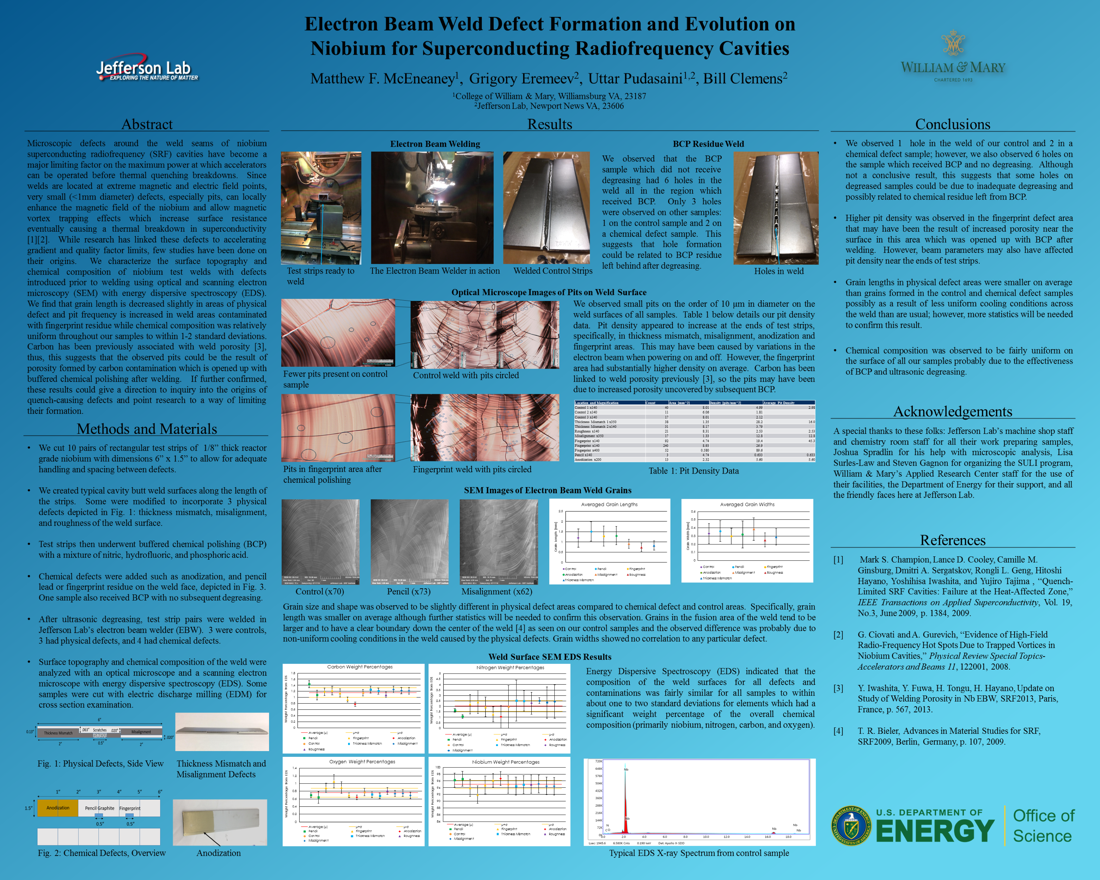Undergraduate Research at Jefferson Lab
Electron Beam Weld Defect Formation and Evolution on Niobium for Superconducting Radiofrequency Cavities
Student: Matthew McEneaney
School: College of William and Mary
Mentored By: Grigory Eremeev
Microscopic defects around the weld seams of niobium superconducting radiofrequency (SRF) cavities have become a major limiting factor on the maximum power at which accelerators can be operated before thermal quenching breakdowns. Since welds are located at extreme magnetic and electric field points, very small (<1 mm diameter) defects, especially pits, can locally enhance the magnetic field of the niobium and allow magnetic flux trapping effects which increase surface resistance eventually causing a thermal breakdown in superconductivity. While research has linked these defects to accelerating gradient and quality factor limits, few studies have been done on their origins. We characterize the surface topography and chemical composition of niobium test welds with defects introduced prior to welding using optical and scanning electron microscopy (SEM) with energy dispersive spectroscopy (EDS). We find that grain length is decreased slightly in areas of physical defect and pit frequency is increased in weld areas contaminated with fingerprint residue while chemical composition was relatively uniform throughout our samples to within 1-2 standard deviations. Carbon has been previously associated with weld porosity, thus, this suggests that the observed pits could be the result of porosity formed by carbon contamination which is opened up with buffered chemical polishing after welding. If further confirmed, these results could give a direction to inquiry into the origins of quench-causing defects and point research to a way of limiting their formation.

Citation and linking information
For questions about this page, please contact Education Web Administrator.
